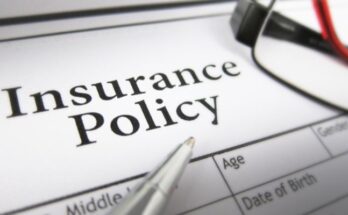Introduction
Understanding Insurance plays a critical role in safeguarding individuals, families, and businesses against financial uncertainties. In this comprehensive guide, we delve into the various types of insurance, their benefits, and how to choose the right coverage for your needs. By understanding the intricacies of insurance, you can make informed decisions to secure your future.
What Is Insurance and Why Is It Important?
Insurance is a contract between an individual or entity and an insurance company. In exchange for premium payments, the insurer provides financial protection against specific risks, such as accidents, natural disasters, or health emergencies. This protection ensures peace of mind and financial stability during unexpected events.
Key benefits of insurance include:
- Risk Mitigation: Reduces the financial burden of unforeseen events.
- Asset Protection: Safeguards valuable possessions, including homes and vehicles.
- Income Security: Provides support in cases of disability, unemployment, or death.
Types of Insurance Coverage
Understanding the various types of insurance helps you identify which policies are most relevant to your situation. Understanding Insurance.
1. Health Insurance
Health insurance covers medical expenses, ensuring you receive quality care without financial strain. Policies often include coverage for:
- Hospitalization Costs
- Prescription Medications
- Preventive Care and Screenings
- Maternity and Pediatric Services
When selecting health insurance, consider factors such as deductibles, premiums, network coverage, and co-payment requirements. Understanding Insurance.
2. Life Insurance
Life insurance provides financial support to your loved ones in the event of your passing. Common types include:
- Term Life Insurance: Offers coverage for a specified period, often at a lower cost.
- Whole Life Insurance: Provides lifelong protection and accumulates cash value over time.
- Universal Life Insurance: Combines a death benefit with a savings component.
Evaluate your family’s financial needs, including debts, living expenses, and future goals, to determine the appropriate coverage amount.
3. Auto Insurance
Auto insurance is mandatory in most regions and protects against financial losses arising from accidents, theft, or damage to your vehicle. Standard policies typically include:
- Liability Coverage: Covers damage or injury caused to others.
- Collision Coverage: Pays for repairs to your vehicle after an accident.
- Comprehensive Coverage: Protects against non-collision events, such as theft or natural disasters.
- Uninsured/Underinsured Motorist Coverage: Safeguards against drivers without adequate insurance.
Consider factors like coverage limits, deductibles, and additional features, such as roadside assistance, when choosing a policy.
4. Homeowners and Renters Insurance
These policies provide financial protection for your home and belongings:
- Homeowners Insurance: Covers property damage, liability, and loss of personal possessions.
- Renters Insurance: Offers coverage for personal belongings and liability for tenants.
Assess risks such as location-based hazards (e.g., floods, earthquakes) to ensure adequate coverage.
5. Business Insurance
Businesses face unique risks that can jeopardize operations. Essential policies include:
- General Liability Insurance: Protects against claims of bodily injury or property damage.
- Professional Liability Insurance: Covers errors and omissions in professional services.
- Property Insurance: Safeguards physical assets, including buildings and equipment.
- Workers’ Compensation Insurance: Provides benefits to employees injured on the job.
Tailor your business insurance package to match industry-specific risks and legal requirements.
Factors to Consider When Choosing Insurance
Selecting the right insurance involves careful evaluation of several factors:
1. Coverage Needs
Identify the risks you face and the level of financial protection required. For example:
- Families with dependents may prioritize life insurance.
- Frequent travelers may benefit from travel insurance.
2. Policy Terms and Conditions
Understand the fine print, including:
- Exclusions: Situations not covered by the policy.
- Claim Limits: Maximum amount the insurer will pay.
- Waiting Periods: Timeframes before coverage begins.
3. Premiums and Deductibles
Premiums are regular payments made to maintain coverage, while deductibles are out-of-pocket expenses you pay before the insurer contributes. Balance affordability with comprehensive coverage.
4. Insurer Reputation
Research the insurance provider’s:
- Customer Reviews
- Claim Settlement History
- Financial Stability Ratings
How to Maximize Your Insurance Benefits
To get the most value from your insurance policies, follow these tips:
- Compare Quotes: Shop around to find competitive rates without compromising coverage quality.
- Bundle Policies: Combine multiple policies (e.g., home and auto) for discounts.
- Review Annually: Reassess your coverage needs regularly to ensure they align with life changes.
- Maintain Accurate Records: Keep documentation of assets, medical expenses, and incidents for hassle-free claims.
Conclusion
Insurance is an indispensable tool for protecting against life’s uncertainties. By understanding the types of coverage available and evaluating your unique needs, you can choose policies that offer optimal protection. Take the time to review options, compare providers, and secure the peace of mind that comes with financial security.




